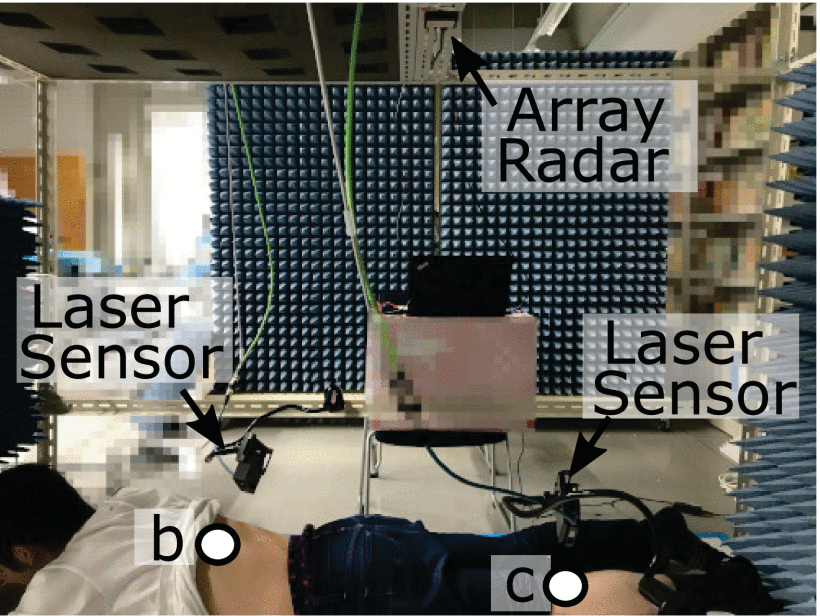Experimental Demonstration of Accurate Noncontact Measurement of Arterial Pulse Wave Displacements Using 79-GHz Array Radar
The arterial pulse transit time (PTT) and pulse wave velocity (PWV) are known indicators of various cardiovascular diseases. In clinical practice, the volume changes caused by the pulse wave are measured at multiple body sites to estimate the value of PTT/PWV. One application of this PTT/PWV measurement is estimating a patient’s systolic blood pressure (BP) without using a cuff.
A conventional sphygmomanometer is used if a patient's blood pressure (BP) needs continuous monitoring. However, its inflatable cuff is cumbersome and involves uncomfortable physical restraint for the patient. To resolve these issues, the noncontact cuffless BP measurement techniques were developed. These techniques enable unobtrusive health monitoring systems that record BP data continuously over long periods.
Microwave and millimeter-wave radar systems are appropriate for these applications. It’s because radar waves can penetrate clothing and comforters and accurately measure physiological signals. Several previous reports have reported radar-based cuffless measurements of pulse wave propagation. However, although the pulse waves were measured via noncontact measurements using radar systems in the existing studies, the position and posture of the target patients required careful adjustment in each case.
Here, the researchers experimented on four participants and used a 79-GHz millimeter-wave ultra-wideband multiple-input multiple-output (MIMO) array radar system on two body parts of them. It was done to estimate their body displacements and the corresponding arterial pulse wave propagation. They then evaluated the accuracy of these radar-based measurements by comparing the results with reference data acquired using laser displacement sensors.
First, the directions of arrival of the echoes from two body parts were estimated using MIMO array signal processing. It was followed by the extraction of the displacement waveforms at the back and the calf of each participant. The proposed system does not require adjustment of the position/posture of the target person during each measurement because the array signal processing can adapt to the radar beam direction. During the estimation of the displacement waveforms at the back and the calf of each of the four participants, the average errors were as small as 24.1 μm and 10.1 μm, respectively, indicating good agreement between the results from the radar and laser measurements.
Next, the pulse wave propagation channel was evaluated quantitatively in terms of its impulse response. The system's impulse response was then calculated based on the estimated displacement waveforms from the two body sites by modelling the pulse wave propagation as a linear time-invariant system. The impulse response was calculated using the radar data and then compared with the corresponding impulse response calculated using the laser data.
For the four participants, the normalized correlation coefficients between the impulse responses obtained from the radar and laser data ranged as high as 0.94, 0.97, 0.98, and 0.98.
These experimental results demonstrated for the first time that arterial pulse wave propagation could be measured accurately in a noncontact manner using a single MIMO array radar system without adjusting the position/posture of the patient.




